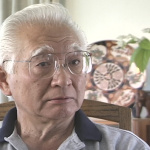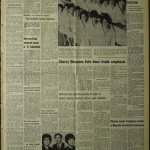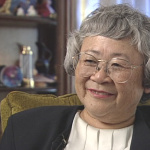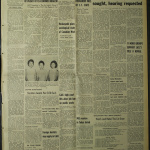Monica Sone
| Name | Monica Itoi Sone |
|---|---|
| Born | September 1 1919 |
| Died | September 5 2011 |
| Birth Location | Seattle, WA |
| Generational Identifier |
Seattle-born author of Nisei Daughter , the first published autobiography written by a Nisei woman, and Ohio clinical psychologist. Monica Itoi Sone's (1919–2011) sensitive, often humorous book, notable for its lack of bitterness, explored the themes of cultural identity, assimilation, racism and intergenerational conflict in the Seattle Japanese American community and at the U.S. government camp Minidoka.
Early Life
The second of four children of Issei parents, Kazuko Monica Itoi grew up in the waterfront hotel her family ran, the Carrollton, attending Bailey Gatzert grammar school and Broadway High School. Her father, Seizo Itoi, immigrated from Japan in 1904, intending to continue studying law in Michigan. Instead, to support himself he farmed, worked on a railway gang and as a ship cook, eventually settling down to marry the daughter of a Congregational minister and amateur poet, Benko Nagashima. Sensing escalating tensions between the U.S. and Japan, Sone's parents urged her to attend secretarial school to secure a vocation. She completed the two-year course in one year, but contracted tuberculosis, spending nine months in a sanatorium. Her dreams of attending the University of Washington were dashed by the bombing of Pearl Harbor.
In May, 1942, Sone, 21, and her family were removed to the Puyallup Fairgrounds temporary prison camp, and in August to the Minidoka U.S. government prison camp in Idaho. In 1943, after receiving security clearance from the military affirming that she was a loyal American, Sone accepted the invitation of a Presbyterian minister and his wife to stay with them in a Chicago suburb. There, Sone worked as a dental assistant before receiving a scholarship to attend the Presbyterian-affiliated Wendell College in Indiana.
Nisei Daughter
Sone's autobiography began as a series of letters she wrote during the war to her sanatorium friend and best-selling author Betty MacDonald. [1] Nisei Daughter was published in 1953, only eight years after the end of World War II. Sone introduces the book's theme of cultural conflict in the opening story: the "shocking discovery," at age six, that she "had Japanese blood" [2] and would be forced to attend Saturday Japanese school. She goes on to explore the gap between the tradition-bound world of her Japanese parents and their colorful and freewheeling Skid Road neighborhood, with its tavern, burlesque house and second-hand clothing store. The result is a cultural bifurcation: to be both "Yankee and Japanese," Sone writes, is like "being born with two heads." [3] The narrative darkens with her increasing awareness of the racial prejudice that surrounds the Japanese, and the shock at learning that the Nisei, despite their American citizenship, will be imprisoned along with their parents. Her discovery of a warmer, more welcoming white milieu in Illinois and a visit with her parents, who are still at Minidoka, result in a coming to terms with her Japanese American identity. "I don't resent my Japanese blood anymore," she tells her parents. "I'm proud of it...I used to feel like a two-headed monstrosity, but now I find that two heads are better than one." [4]
Critical Reception
Nisei Daughter was reviewed favorably when it appeared, lauded for its honesty, humor, lack of self-pity and its successful resolution of cultural conflict, "an encouraging reminder of the melting pot at work." [5] Since its 1979 reissue, it has been used in Asian American studies courses for its descriptions of the prewar community, forced removal and incarceration of the Japanese, and as an expression of the assimilationist outlook of the Nisei. [6] More recently, critics have taken issue with the pat ending of the book and Sone's willingness to gloss over the serious injustice done to her people. Shirley Geok-Lin Lim criticized "the narrator's ability to rationalize the white Americans' overt acts of discrimination," and wrote, "The reconciliation of Japanese and American in the book's conclusion evades recognition of the erasure of Japanese pride and identity." [7] Others have countered that Sone's book was published when anti-Japanese sentiment was still high, and the impetus for the Nikkei to assimilate into mainstream American society was felt both within and outside the community. [8] According to this view, Sone's carefully calibrated prose served as first step in opening a dialogue that would take full flower in later decades. [9]
Postwar Years
Sone graduated from Hanover College in Hanover, Indiana, earned her master's degree in clinical psychology at Case Western Reserve University in Cleveland, Ohio in 1949, and practiced for thirty-eight years as a clinical psychologist and social worker for the Catholic Community League. She and her late husband, WWII veteran Geary Sone, raised four children in Canton, Ohio. In 1980, Sone noted that the war had "a very damaging and devastating psychological effect" on Nisei, who "just swept under the rug" the experience in their zeal to rebuild their lives after the war, "while the feeling of rejection" remained. [10] Sone passed away in Canton in September 2011. At the time of her death she was working on her second book.
For More Information
Beebe, Ann. "Sone, Monica (1919- )." In Encyclopedia of Asian-American Literature . Edited by Seiwoong Oh. New York: Facts on File, 2007.
Fujii, Ann. "Monica Sone: Beginning to Feel Better about Ourselves." International Examiner 7:2, 1980.
Geok-Lin Lim, Shirley. "Japanese American Women's Life Stories: Maternality in Monica Sone's 'Nisei Daughter' and Joy Kogawa's 'Obasan.'" Feminist Studies 16.2 (summer 1990): 288–312.
Oka, Takashi. "Review of Nisei Daughter, by Monica Sone." Christian Science Monitor , Feb. 26, 1953: 11.
Sone, Monica. Nisei Daughter . 1953. Introduction by S. Frank Miyamoto. Seattle: University of Washington Press, 1979.
Yamamoto, Traise. " Nisei Daughter by Monica Sone." In A Resource Guide to Asian American Literature . Edited by Sau-ling Cynthia Wong and Stephen H Sumida. New York: Modern Language Association of America, 2001.
Footnotes
- ↑ Ann Beebe, "Sone, Monica (1919- )," in Encyclopedia of Asian-American Literature , ed. Seiwoong Oh (New York: Facts on File, 2007), 270.
- ↑ Monica Sone, Nisei Daughter (Seattle: University of Washington Press, 1953, 1979), 3.
- ↑ Sone, Nisei Daughter , 19.
- ↑ Ibid., 236.
- ↑ Takashi Oka, "Review of Nisei Daughter by Monica Sone," Christian Science Monitor , Feb. 26, 1953, 11.
- ↑ Traise Yamamoto, " Nisei Daughter by Monica Sone," in A Resource Guide to Asian American Literature , eds. Sau-ling Cynthia Wong and Stephen H Sumida (New York: Modern Language Association of America, 2001), 152.
- ↑ Shirley Geok-Lin Lim, "Japanese American Women's Life Stories: Maternality in Monica Sone's 'Nisei Daughter' and Joy Kogawa's 'Obasan,'" Feminist Studies 16.2 (summer 1990), 299.
- ↑ Yamamoto, " Nisei Daughter by Monica Sone," 154.
- ↑ Beebe, "Sone, Monica," 271.
- ↑ Ann Fujii, "Monica Sone: beginning to feel better about ourselves," International Examiner Feb. 29, 1980, 7.
Last updated July 11, 2014, 12:46 a.m..







